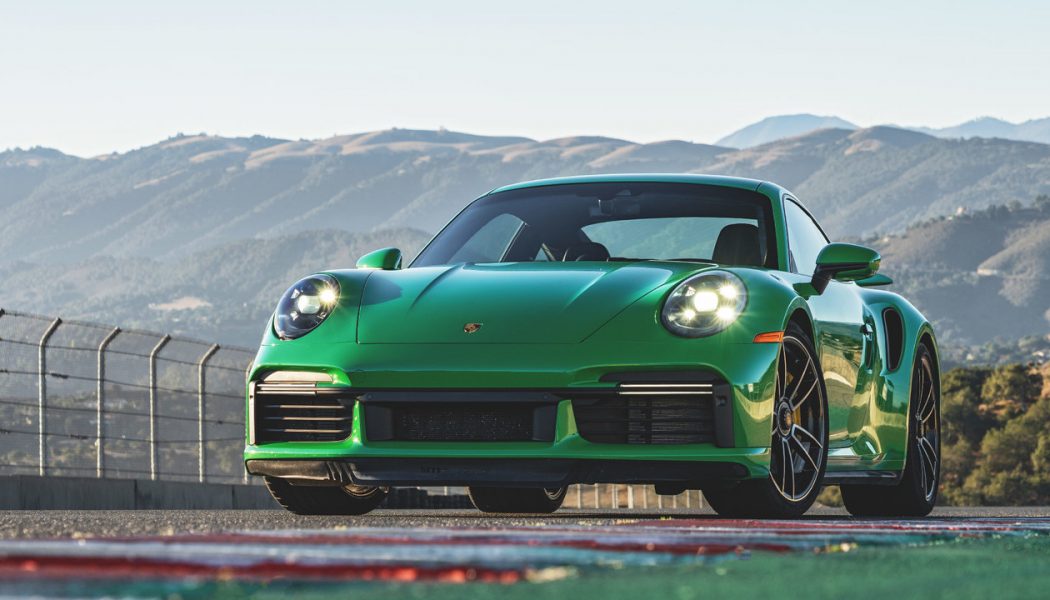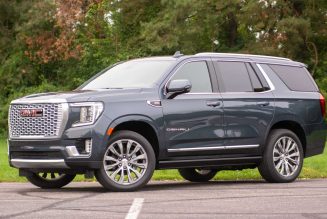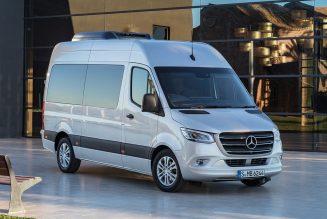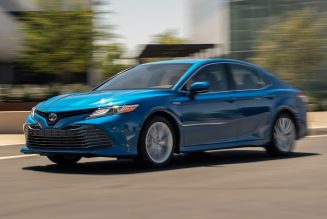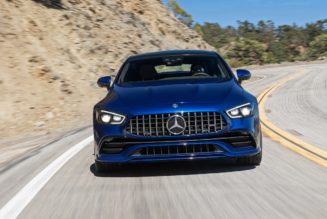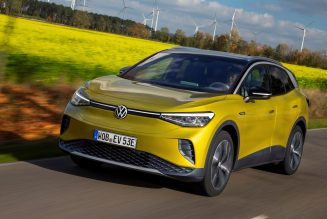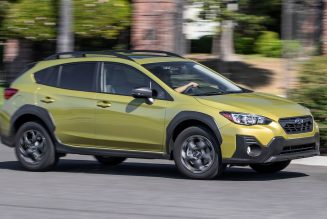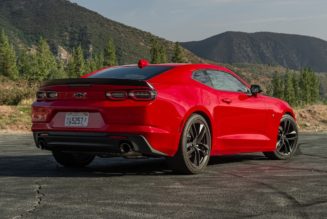If you want a real sports car that you can comfortably drive every day that’s also a luggage-capable weekender and even a track day adrenaline supplier, then you pick a 2020 Porsche 911 Carrera. If you want the most satisfying, involving, and purest form of that 911, then you pick the one with three pedals. It won’t be the quickest version, but it gives you goose bumps while manually conducting the entire symphony.
If You Know, You Know: Why the Porsche 911 Is Special
Driving a Porsche 911 is a unique experience. Aside from the rear-mounted engine and rear-wheel drive, it’s also unlike others in the segment. It hardly gets noticed. We drive hundreds of cars a year and hear, “Is that the new Corvette?! Is that a McLaren, a Lamborghini, etc.?” We’ve heard them all. “Meh, it’s just a Porsh.” I like this kind of anonymity. And with a manual transmission, there’s some anecdotal evidence that it’s less likely to be a target for car thieves. With the engine out back, only 37 percent of its 3,326 pounds burdens the front wheels—leaving 63 percent over the driven wheels. Because of this, the clarity that comes through the steering wheel is rivaled by few others and, when combined with optional rear-axle steering, borders on sublime. This rear-engine layout also means there are about 4.7 cubic feet of cargo volume between the two front wheels and another 9.3 behind the front seats. That’s sizeable and useful.
Matchy-Matchy: Driving the Porsche 911
You’ll never read a review of a Porsche—any Porsche—that says, “This car is hard to sort out. Steering is too heavy; the brake pedal is too jumpy. I never know what it’s going to do.” One doesn’t so much ride in a 911 as wear one—like a track suit. I’ve written this several times before, but the way Porsche matches all control efforts—a lesson learned from decades of endurance racing—is something few manufacturers understand, much less strive to ensure. Porsche has extended this effort-matching philosophy and practice to the clutch pedal and short-throw shift lever. The steering, brake and clutch pedals, and shifter all offer the same resistance and response.
The result is that you never really think about driving the car, you think about how best to drive the car: best line, best place to brake, best place to roll on the throttle, and so on. In a way, the driver is juggling objects of the same weight. There’s no managing the car’s idiosyncrasies or foibles. There’s just the road ahead and how to put it behind you. What’s more, the car rewards your best efforts by improving the harder you drive it right up to its easily recognized limits. Adding the mechanical connection of a well-executed short-throw manual transmission to the driving experience enhances the joy of driving.
How Much Does a Porsche 911 Carrera S Cost?
We recently reviewed a base 379-horsepower Porsche 911 Carrera with a starting price just under $100,000 and came away convinced that there’s no such thing as a “base” 911. However, this 443-horsepower Carrera S with its seven-speed manual doesn’t come cheap. It starts at $114,650, and as is common with a Porsche, over $22,000 in options raised the as-tested price to $137,270. The high-ticket and highly recommend mechanical options are rear-axle steering ($2,090) and the manual transmission Sport package ($3,390) that includes Porsche Active Suspension Management (adjustable, active damping and stiffer springs and anti-roll bars with a 10mm drop in ride height), the Sport Chrono package (four drive modes), and multi-mode sport exhaust. In terms of style, the gorgeous Aventurine Green Metallic paint only costs an extra $830, and it’s complimented by lovely, classic silver window trim ($400). I can’t recall the last time I saw that on a 911. We also love the leather seats with the checker-woven centers ($3,830) and the open-grain Paldao wood trim ($1,900). This is one of the best-spec’d Carreras we’ve seen. It doesn’t look like an M&M on the outside nor a dour techno fest inside. Such warmth, texture, and comfort—in a 911?!
Three Pedals or Three Letters? The Porsche 911 Transmission Dilemma
For decades, some sort of automatic transmission has been available for the Porsche 911. It was always the slower shifting and thus slower to any speed, less involving, and the “fail” choice among enthusiasts of the legendary German sports car. But in 2009, the game-changing Porsche Doppelkupplungsgetriebe (PDK) twin-clutch automated manual tipped this paradigm on its head. First used by Porsche in its dominating 956 and 962 endurance racers, the PDK provides quicker and near-seamless shifting than a torque converter automatic or manual transmission. When combined with Porsche’s benchmark launch-control system, PDK proves faster to any speed and around any racetrack. So, why is the row-your-own gearbox still available? Tradition, take rate, and driver involvement.
Porsche Is All in with “Save the Manual”
Depending on which car they’re considering, given the choice, 5 to 15 percent of buyers tick the manual transmission box when they order a sports car. But according to Porsche, historically a full 80 percent of 911 Carrera Ts, 70 percent of GT3s, 34 percent of the Carrera GTSes, and about 20 to 25 percent of 911 Carreras sold in the States are ordered with a manual transmission. Clearly, Porsche 911 buyers enjoy the satisfaction a do-it-yourself transmission offers and the mechanical connection to the car it provides. Count us in.
Testing the Acceleration of the Porsche 911 Carrera S
In two previous tests of the 2020 Porsche Carrera S we saw incredible consistency from the eight-speed PDK-equipped cars. Acceleration from 0 to 60 mph ticked by in just 2.9 to 3.0 seconds. The quarter-mile finish line arrived in 11.2 seconds both times. How does the seven-speed manual measure up? Good but not great. Part of it is in the disparate launch techniques, and part of it is shift speed. Whereas the PDK and launch control-equipped cars rev to 5,000 rpm at launch and only dip to 4,000 throughout most of first gear, with the manual transmission revs are limited to 3,500 at a standstill. This is a new hurdle for the 992-generation 911. Although this limiter is above where the engine first reaches peak torque output (at 2,300 rpm), the traction supplied by the meaty 305/30R21 Pirelli P Zeros is too great to overcome for any sort of wheelspin. So it’s down to the driver to mimic the PDK and feed the clutch pedal progressively to get off the line. It ain’t easy, and the best effort resulted in a 0-30 mph time (how we determine the effectiveness of a launch) of 1.7 seconds. The PDK cars? Just 1.1 seconds. Ouch. And losing fractions of a second with each manual upshift, 0 to 60 mph slips a full second behind to 4.0 seconds. Similarly, compared to the PDK version, the Carrera S’ quarter-mile time is a full second behind at 12.2 seconds.
How About That Friction Circle?
On our figure-eight test that combines acceleration, braking, corner entry, steady-state cornering, and corner exit, the 911 is such a thing to behold. The gearing was nearly perfect. Second gear runs out before you reach the braking point, requiring a deft 2-3-2 shift right before you enter the skidpad portion. It turns out that rather than shifting, momentarily bouncing off the rev limiter in second gear proved to be quicker. Here are some selected notes from that test: “Always such a pleasure to drive a 911 on the F-8. It does everything you expect and more. The harder you push it, the better it responds, a testament to the mechanical engineers’ and development drivers’ excellent work. With stability- and traction control defeated, I can totally trust this car. No surprises, no ‘that’s weird’ moments. It just does its job with confidence and competence. Brakes are strong (60 to 0 mph in 94 feet) and consistent, so it’s easy to find the right braking point every time and trail it into the corner. The turn-in is crisp and predictable. There’s plenty of grip (1.08 g laterally), and with every corner exit, I was amazed at how well the car put the power to the pavement. Such a great sports car that I wonder what fraction of its owners even know.”
Porsche 911 Carrera S Gripes?
Yes, but they’re small. Like many people, I’m not a fan of the widespread practice of producing “enhanced” engine/exhaust sounds through a vehicle’s audio system. We all know turbochargers tend to quash some of an engine’s roar. The way Porsche enhances these intake/exhaust sounds is unnatural. I’m certain Porsche was aiming to emulate interior audio from previous naturally aspirated 911s, but the resonances that comes from the speakers sounds like a recording—especially in Sport Plus mode.
We’re pleased that the 911 Carrera’s manual transmission is reasonably tightly geared. Each upshift approaching redline drops the engine back into the meat of the power. Having seven forward gears, I must admit I got lost in the HHH pattern a couple times, entirely on downshifts. Muscle memory is a strange thing. The shifter up over there feels like fifth gear when, in fact, it was in seventh. So, downshifting to sixth feels like going to fourth at, let’s say 75 mph. You get the idea. Given more time in the car or were it were mine, I’m certain I’d acclimate.
Is There an Analogue to the Porsche 911?
It was a sad day when I returned this beautiful and accomplished car. It was like giving up on a vein in a mine where I knew there was so much gold to discover. It’s such a lovely car to look at and admire, but also a supremely competent and confident driving partner. It’s the kind of sports car that inspires one to drive it, and drive it harder and harder. The synchronicity I felt with this car challenged me to find a rival, an analogue. What’s a car that I’ve driven that supplied me with this level of trustworthiness and challenge but pushed me to tune my driving skills? The nearest I came was a 996-generation manual-only Porsche 911 GT3. That was the first Porsche I felt could be trusted and, in fact, made me push my self-set limits and find new boundaries to break through. That I’m writing the same things about a 911 Carrera S speaks volumes to the advancements Porsche has made to the “regular,” non-GT version of the car. So pure, and so rewarding is the manual-equipped 2020 Porsche 911 Carrera S.
| 2020 Porsche 911 Carrera S | |
| BASE PRICE | $114,650 |
| PRICE AS TESTED | $137,270 |
| VEHICLE LAYOUT | Rear-engine, RWD, 4-pass, 2-door coupe |
| ENGINE | 3.0L/443-hp/390-lb-ft twin-turbo DOHC 24-valve flat-6 |
| TRANSMISSION | 7-speed manual |
| CURB WEIGHT (F/R DIST) | 3,326 lb (37/63%) |
| WHEELBASE | 96.5 in |
| LENGTH x WIDTH x HEIGHT | 178.4 x 72.9 x 50.8 in |
| 0-60 MPH | 4.0 sec |
| QUARTER MILE | 12.2 sec @ 119.9 mph |
| BRAKING, 60-0 MPH | 94 ft |
| LATERAL ACCELERATION | 1.08 g (avg) |
| MT FIGURE EIGHT | 23.3 sec @ 0.86 g (avg) |
| EPA CITY/HWY/COMB FUEL ECON | 17/25/20 mpg |
| ENERGY CONS, CITY/HWY | 198/135 kWh/100 miles |
| CO2 EMISSIONS, COMB | 0.98 lb/mile |
